Meet the next generation of Australians leading our defence forces
Izaak Gurney is a walking and talking billboard of the vast opportunities available to young Aussies in the defence sector, and he’s urging others to follow in his footsteps.
SA News
Don't miss out on the headlines from SA News. Followed categories will be added to My News.
By the age of 30, Izaak Gurney has joined the military, supported operations across the Indo Pacific and the Middle East and now leads the space, cyber and information systems program at a multinational defence company.
Mr Gurney, who is originally from Whyalla and now works on state-of-the-art technology projects at KBR, hopes to inspire younger generations to follow in his footsteps and consider a career in the defence sector.
“Nowhere else can you fly fast jets, work hundreds of metres underwater in a submarine or quite literally be parachuted out of a plane anywhere across the globe,” Mr Gurney, now based in Canberra, said.
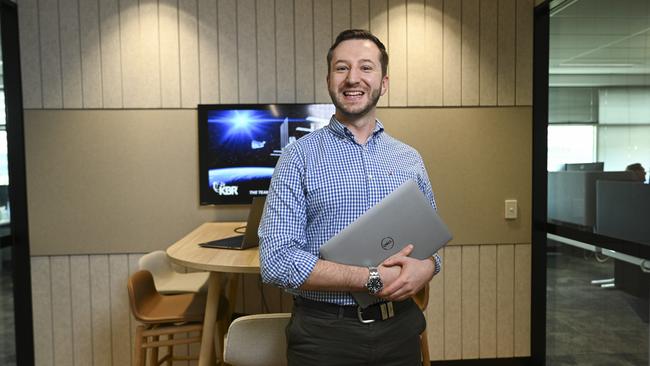
The 30-year-old began his military career as a maritime warfare officer in 2013 and went on to be stationed in Canberra, Sydney and Cairns.
Last year Mr Gurney joined KBR and oversees the use in Australia of KBR’s space domain awareness tool, Iron Stallion, a technology that can find, track and report on the movement of objects in space.
Mr Gurney is part of a young workforce driving the future of the defence industry.
The defence industry currently employs about 5500 people in South Australia but this is expected to expand to more than 11,000 by the 2040s.
The future workforce will include up to 5500 jobs in the state for the AUKUS nuclear submarine project and a further 2900 for supply chain and supporting activities.
There will be an additional 4000 workers employed for the design and build of the submarine construction yard.
John Dunstan, 24, is an Adelaide-based software engineer at Babcock Australasia and is working on Australia’s high frequency communications capabilities.
The Defence High Frequency Communications Systems helps the Australian Defence Force and allies communicate securely, almost anywhere in the world.
“The opportunities are endless for young people starting out in the defence sector,”
Mr Dunstan said.
Mr Dunstan, who was born in Cambodia and moved to Adelaide as a one-year-old, studied software engineering and mathematical science at Flinders University and worked at Micro X, a hi-tech X-ray company, to complete his honours degree.
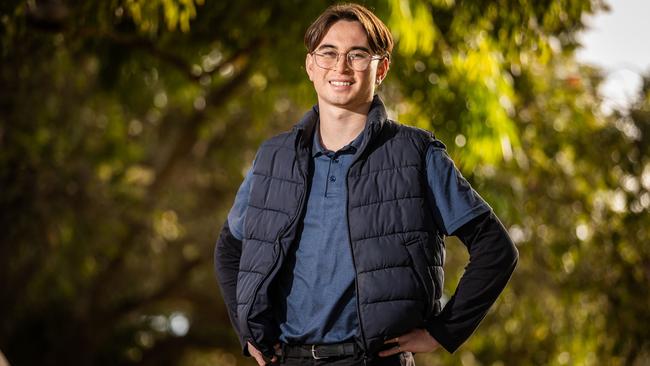
He then joined the graduate program at Babcock in November 2022, specifically for high frequency communications, because he was “excited to work on a project from its inception”.
“High frequency communications is a critical capability supporting our service men and women ultimately supporting the nation now, but also for our future generations,” Mr Dunstan said.
At the end of Year 11, Adem left Mount Carmel College early to work in defence at BAE Systems Australia.
Now an apprentice in piping at the company, the 17-year-old’s decision was inspired by work experience with BAE at the shipyard at Osborne in 2023 where he practised virtual welding.
“If I didn’t leave school, I would come here (to BAE) anyway so I might as well get a year ahead,” Adem said.
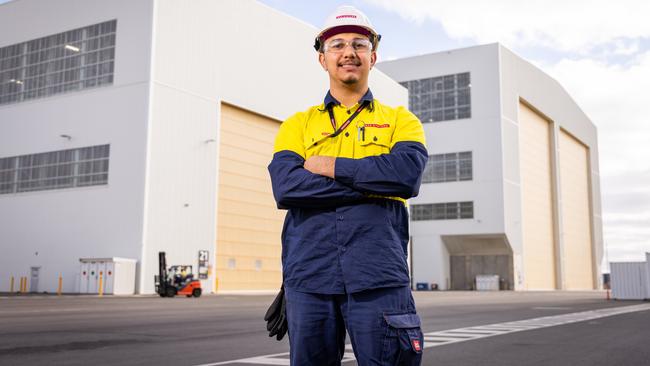
For the teenager, the hands-on nature of the role was rewarding as he is fabricating piping on the Hunter Class frigates project with the company.
“It gives you a sense of pride and it’s something you can say to your future kids,” he said.
Lieutenant Commander Adam Lachlan, 31, joined the navy in July 2010 with an interest in working with world-leading technologies.
He graduated from UNSW ADFA in 2014 with a Bachelor of Engineering (Aerospace) and worked as an aerospace engineer but his current role is as a career manager.
Lieutenant Commander Lachlan, who works to match engineers to the roles they are best suited for, said he has enjoyed the variety of opportunities offered by the ADF.
“We do get a lot of opportunities where you are exercising a lot of other skills that are transferable … and I think it really falls back to being an officer, rather than just being an engineer,” he said.
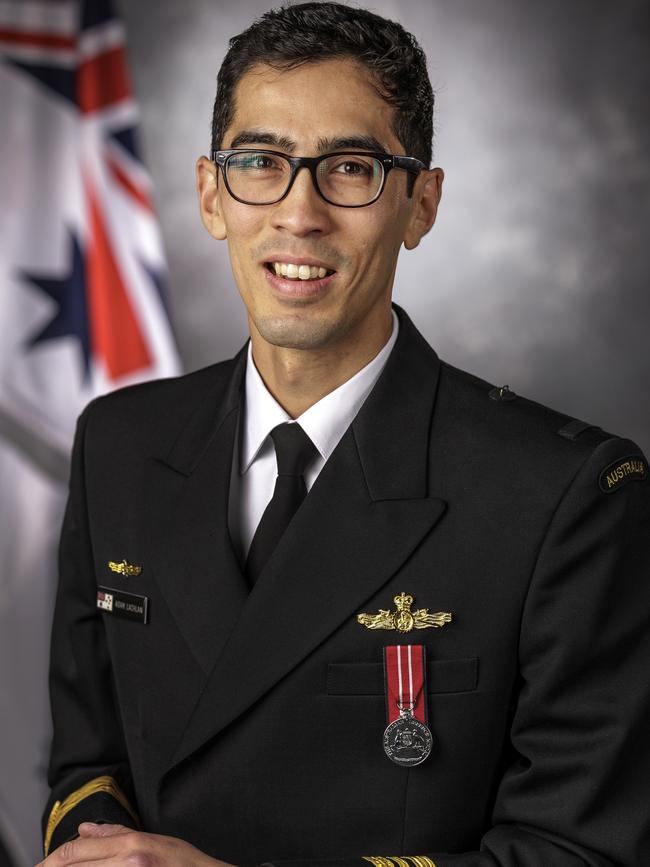
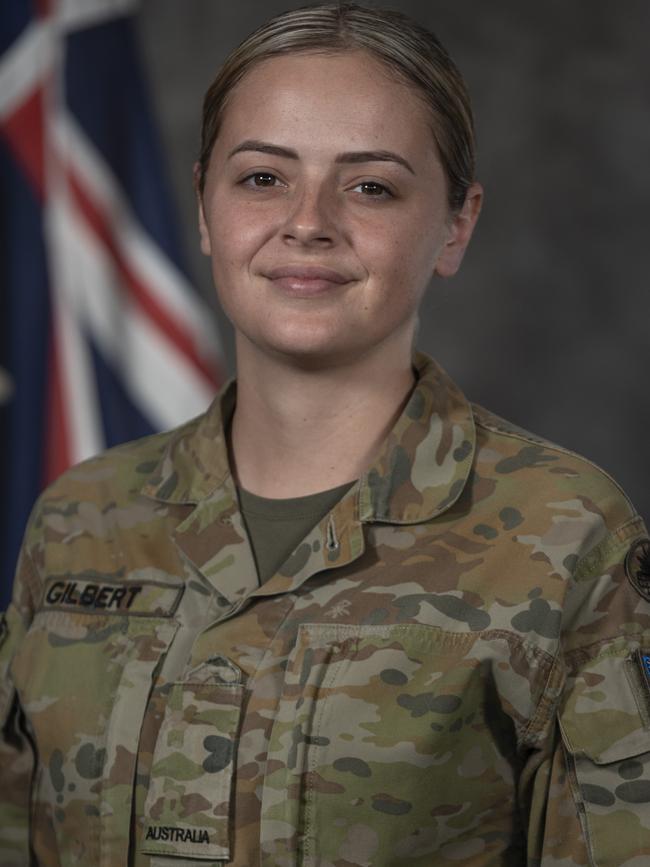
Private Jemma Gilbert, 25, was a teacher’s aide at a New South Wales primary school in 2021 when she realised defence was her calling.
“An ad came up on my phone and I clicked it,” Private Gilbert, based in Canberra said.
By early 2022, she had joined the ADF.
Upon the completion of her training, she was posted to an infantry battalion in Brisbane.
“It let me learn the ropes really quickly,” Private Gilbert said.
Travel has been a highlight so far for Private Gilbert and a flight in a defence chinook helicopter over Townsville.
Inspired by her experiences so far, Private Gilbert’s 17-year-old brother will join the army next month.
When Leading Aircraftwoman Corina Costin, 31, came to Australia from Romania in 2007 she initially wanted to be an architect.
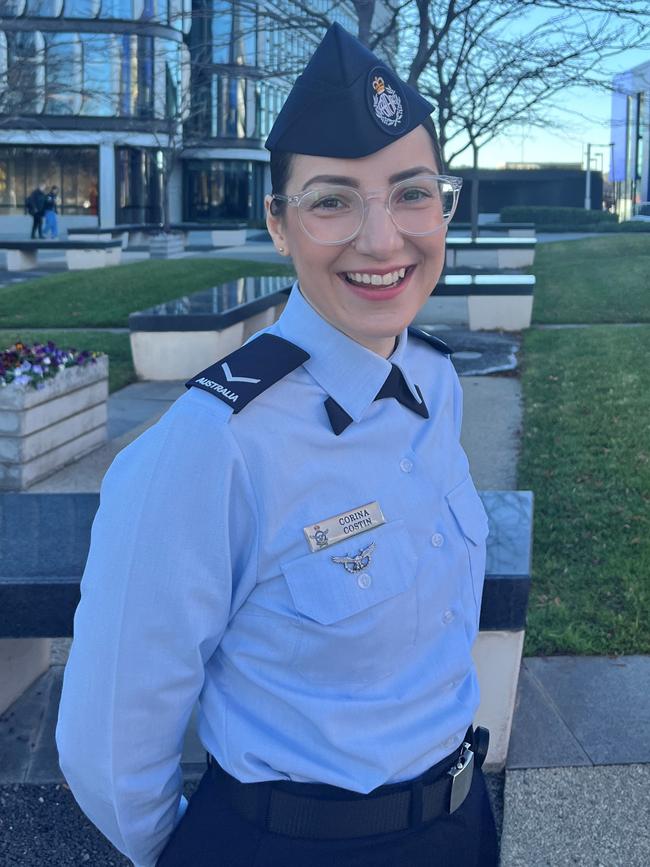
She finished an architecture degree at RMIT in Melbourne in 2014 and three years later finished her Masters in Brisbane.
But after working as an architect for two years, LACW Costin wanted a change.
“I felt like I was lacking something in my life and work-life balance was not there,” she said.
In 2020 LACW Costin joined the defence force as an intelligence analyst and would “get a wider picture of the ground” overseas and in Australia.
Now she is a personnel capability specialist, helping people in defence progress through their careers.
In the future, LACW Costin hopes to work in the cyber field of defence.
“If it does come to being involved in a major world conflict, it’s not going to be a World War II repeat, it’s going to be more within the lines of cyber,” she said.
But while young people are increasingly leading the nation in areas such as space, cyber and nuclear, ADF head of military personnel, Major General Wade Stothart said more could be done to appeal to them.
“There’s still a large portion of the population that doesn’t understand defence industry opportunities and we want to raise awareness,” he said.
ADF director general defence force recruiting, Commodore Jan Wiltshire said marketing is changing in defence, targeting regional areas and breaking down the “misalignment” with what a role in the industry looks like.
She said increasingly advertising is “in the areas where the target audience is consuming it” such as social media.
The key to getting kids excited by defence careers
By Paul Starick
A national drive to excite school students about hi-tech and lucrative careers helping build AUKUS nuclear-powered submarines is being urged by defence industry chiefs, who warn existing programs will not be enough for the $368bn project.
The Asia Pacific government solutions vice president of technology and engineering firm KBR, Nic Maan, said workforce was widely recognised as the biggest challenge, because industry across all three AUKUS nations was competing for the same professionals and tradespeople across multiple disciplines.
“I think one of the areas we have to get better at is how we reach out to early careers people and kids in schools, and get them interested before they head off to uni,” he said.
“Rather than try and capture them through the university cycle, get kids interested, even in early high school, in STEM and so on more.
“That’s some of the investments we have to make and we have to make their career interesting. We have to give them an excitement around the technologies that they’ll be involved in.
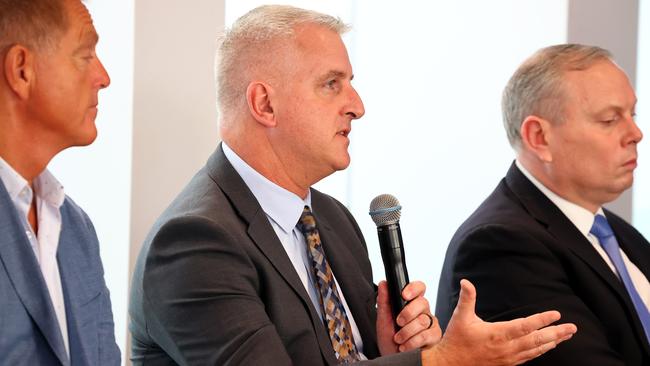
“This is where also I think the drive to deliver technology quicker and more efficiently will interest our younger people as well, because they won’t become bored with projects that move at a snail’s pace.
“They’ll be projects that are interesting, cutting-edge technology and moving quickly, and that’s what I believe interests our younger generations as well.”
KBR has been leveraging its Frazer-Nash Consultancy for UK-based nuclear expertise, including to help retrain Australian engineers, but Mr Maan cautioned this would be unsustainable for both nations’ industries.
“So, we have to, and we are, looking at how we sponsor, university degrees, master’s degrees, PhDs, interns – all that sort of stuff – and how we create that self-generating ecosystem of nuclear capability,” he said.
“The numbers we have here clearly aren’t going to be enough in the long term. And the question is: ‘How do you create that?’.
“But it’s not just bringing graduates through – you’ve got to have experienced people look after them and train them and that’s the really hard problem to solve.”
Mr Maan said this extended across the entire spectrum of skilled workers – professionals to tradespeople – and would require more diverse thinking about bringing people into the industry.
“Clearly there’s security, hurdles and things like that we have to be respectful of but we’ve got to encourage more diversity in our workforce and tap into to maybe demographics which we’ve never traditionally kind of considered or targeted as well,” he said.
“ … When the industry is being challenged by defence to come up with innovative technology solutions, we should be looking for people who have not necessarily a defence background, who can bring different thinking, and I think that’s really important.”
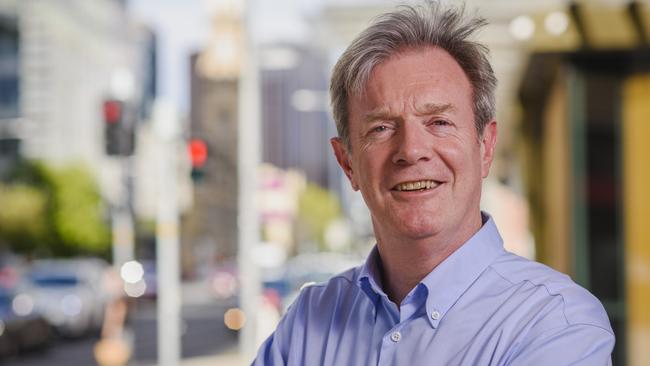
Babcock’s managing director AUKUS & international Sir Nick Hine, previously the UK’s Second Sea Lord, said defence firms first had to focus on existing university and vocational students, then “encourage and excite” school students into relevant courses.
“We should be saying to a university student: ‘I want you to study engineering, you’re going to study engineering and, therefore, I am going to provide you with a five or a seven-year activity whereby you go to university and you study, I’ll employ you as an intern while you’re at university’,” he said
“When you qualify, I’ll pay your HECS charge off or your university charge off over the period of employment. So you can get to seven years – you’re qualified, you’ve been working for me for two years and you’ve got no debt.”
Sir Nick said this should apply both in Australia and the UK – also targeting school students.
“I should be going to schools, and getting 16-year-olds and saying to 16-year-olds: ‘Come and study at university, come and study engineering as part of this AUKUS conversation and here’s the package’,” he said.
“We should be saying that to the children and, more importantly, we should be saying that to the parents.”
Regardless of whether these graduates all worked on AUKUS projects or even in defence, Sir Nick argued the breadth of skills required would be invaluable for spurring economic growth.
“You’re investing in skills. Let’s be very clear – we’re not just about creating mechanical engineers and electrical engineers. We’re talking about data engineers, we’re talking about project managers, we’re talking about system engineers, we’re talking about all the things that you’re going to need in order to deliver this national endeavour,” he said.
“It’s not just people with spanners – not even nuclear spanners – it’s the whole ecosystem we’ve got to do.”




